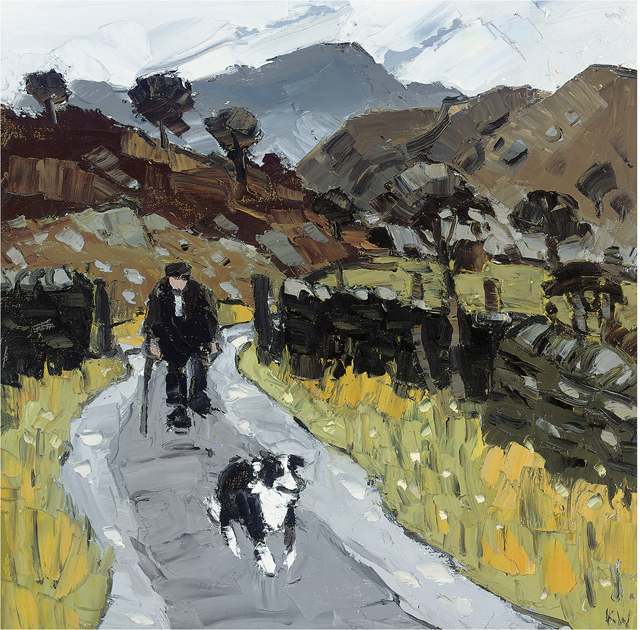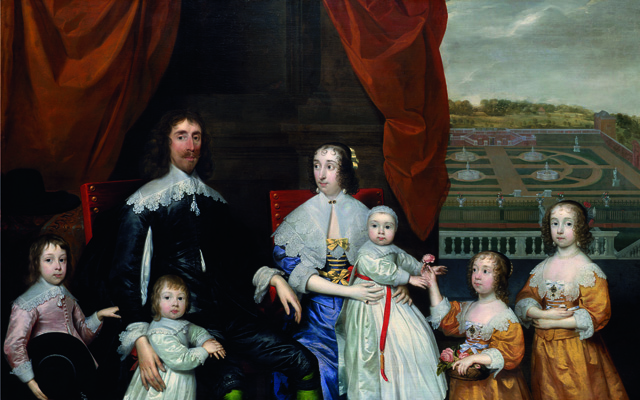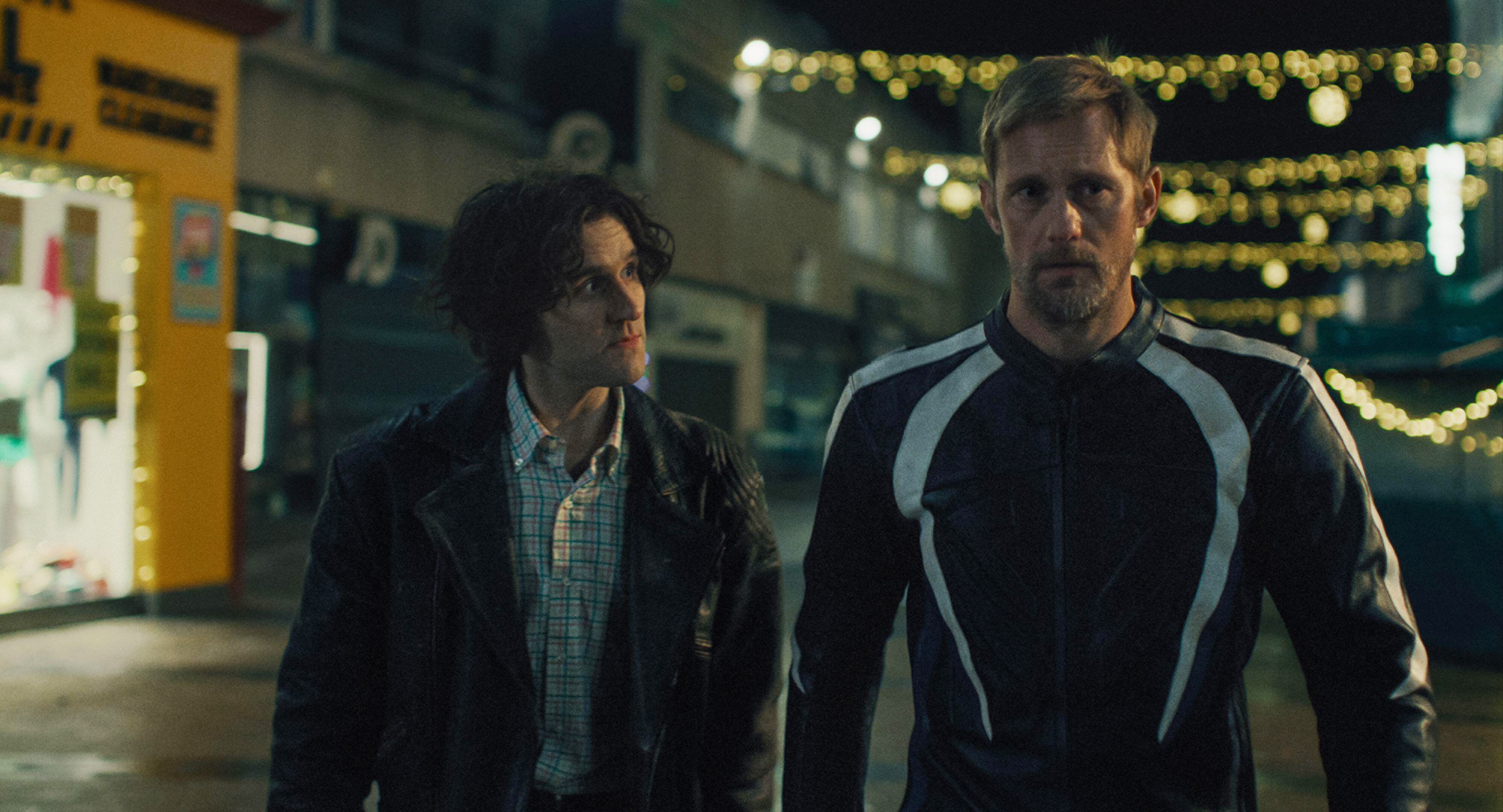The best art exhibitions to visit this June
Read our comprehensive list of the best art exhibitions around the country to visit this June.

Love Bites: Caricatures by James Gillray ‘Love Bites’ marks the 200th anniversary of the death of the caricaturist James Gillray (1757-1815), renowned for his unflinchingly cruel political and social satires. This exhibition hones in on a neglected aspect of his work, the portrayal of marriages and alliances, whether sexual, political or, unexpectedly, anatomical. Another unique approach is the exploration of Gillray’s debt to High Art and his classical training. The exhibition features sixty works taken from the collection of New College, Oxford, one of the greatest and best-preserved groups of Gillray’s work. 26 March–21 June Ashmolean Museum, Beaumont Street, Oxford, OX1 2PH www.ashmolean.org; 01865 278000
Hubert Watrigant An exhibition focusing on the equestrian painting of Hubert de Watrigant, who grew up in the South West of France, where his father bred and trained racehorses. Watrigant sketched in the stables from a young age. Particularly notable is his distinctly impressionist approach to the world of racing and his expression of transience. Watrigant anchors these fleeting movements in a wide variety of materials including charcoal, pastel, oils and collage. 15 June–10 July The Osborne Studio Gallery, 2 Motcomb Street, London, SW1 8JU www.osg.uk.com; 020 72359667
Hide and Seek: Drawings by Eileen Cooper RA Presenting the largest exhibition of drawings of Eileen Cooper, Royal Academician and Keeper of the Royal Academy, to date. Cooper is best known for her richly coloured and expressive paintings and prints; Hide and Seek explores the less acknowledged avenue of her drawings made in a variety of media including charcoal, pencil, pastel and ink. The works shown span almost forty years of her career and dominating themes include play, family, childhood and womanhood. The exhibition displays a collection of ten drawings, gifted by Cooper to the Royal Academy, for the first time. 29 May–23 August Royal Academy of Arts, Burlington House, Piccadilly, London, W1J 0BD www.royalacademy.org.uk; 020 73008000
Francis Bacon and the Masters This exhibition concentrates on Francis Bacon’s fascination with past masters, such as Michelangelo, Rembrandt, Rodin and Picasso, and his fusion of these past precedents with his own highly distinct Modernist language. A collaborative curation between Dr Thierry Morel, curator of the Houghton Revisited exhibition in 2014, Lina Renna from the State Hermitage Museum; and Amanda Geitner, Chief Curator from the Sainsbury Centre. The thirteen Bacon paintings in the Sainsbury collection are supplemented by important loans gathered from across Britain and Ireland; in all, more than thirty works by the artist are shown. 18 April–26 July Sainsbury Centre for Visual Arts, UEA, Norwich, NR4 7TJ www.scva.ac.uk; 01603 593199
Architect-Designers: from Pugin to Voysey The final exhibition of The John Scott Collection celebrates a critical period of British design when architects turned their attention to designing domestic objects, such as furniture and metalwork. A.W.N Pugin, although most known for his designs for the Palace of Westminster, helped pioneer crucial principles of the Arts and Crafts Movement putting Britain at the forefront of avant-garde design from the 1851 Great Exhibition to the outbreak of the First World War. A range of artists and objects illustrate this critical movement, from C.F.A Voysey’s own side table to a William de Morgan tile panel to W.A.S Benson’s lighting and furniture. 3–25 June The Fine Art Society, 148 New Bond Street, London, WIS 2JT www.faslondon.com; 020 76295116
39th Annual Exhibition at Browse and Darby A mixed-media exhibition focusing on British and French paintings, drawings, prints and sculpture, including ceramics by William Plumptre, pencil sketches by Berthe Morisot and a bronze by Edgar Degas. 10 June–15 July Browse & Darby, 19 Cork Street, London, WIS 3LP www.browseanddarby.co.uk; 020 77347984
Laura Ford at Strawberry Hill The first exhibition of contemporary art in the grounds and house at Strawberry Hill; Laura Ford’s portrayals of animals explore aspects of the human condition. Ford’s fantastical figures not only evoke nightmarish visions, but also work in tandem with the capricious Gothic architecture and the sensibilities of its creator, Horace Walpole, who fondly referred to his house as ‘a plaything’. The exhibition, curated by Stephen Feeke, combines existing works and new works made in response to the inimitable setting; the latter taking masters such as Massaccio and Reynolds for their inspiration. 20 June–6 November Strawberry Hill, 268 Waldegrave Road, Twickenham, TW1 4ST www.strawberryhillhouse.org.uk; 020 87441241
Exquisite houses, the beauty of Nature, and how to get the most from your life, straight to your inbox.
Artists and Music Running simultaneously with the various musical entertainments of the ‘Music Season’, including Glyndebourne and Garsington Operas, this show highlights the influence of music on a variety of artists and sculptors. It brings a range of artistic styles and musical influences into dialogue, embracing both twentieth-century artworks and those commissioned specifically for the exhibition. The composer Benjamin Britten’s influence, for example, is revealed both in the late twentieth century work of John Piper and the twenty first century work of Maggi Hambling. The pop artist Sir Peter Blake’s celebration of music is also explored. 13 June–15 August Bohun Gallery, 15 Reading Road, Henley-on-Thames, Oxfordshire, RG9 1AB www.bohungallery.co.uk; 01491 576228
Frames in Focus: Sansovino’s Frames This exhibition concentrates not on paintings but on their frames, which are often marginalised in the analysis of an artwork. Thirty ‘Sansovino frames’ (dating from 1560-1590) are showcased, named after Jacopo Sansovino, who introduced the style of the High Renaissance into Venice. They are characterized by carved overlapping scrolls, garlands of fruit, masks, broken pediments and even animals. The exhibition demonstrates not only the crucial importance of frames to paintings, but also the significance of appreciating them as artworks in their own right. 1 April–13 September The National Gallery, Trafalgar Square, London, WC2N 5DN www.nationalgallery.org.uk; 020 77472423
Alice Hall A solo exhibition of Alice Hall’s landscapes, cityscapes and seascapes; Hall’s plein air paintings attempt to capture the atmosphere and spirit of a place, whilst remaining truthful to the subject. Her works include depictions of London, Jersey and further afield. 16–27 June Royal Opera Arcade Gallery, 5b Pall Mall, London, SW1Y 4UY www.alicehall.co.uk; 020 79308069
British Impressions The paintings exhibited (1890-1940) illustrate a variety of styles, techniques and approaches to subject matter that defy any blanket term, but each artist rejected static, defined forms and set narratives and was connected to the development or evolution of Impressionism in Britain. Although some spent time in France absorbing the lessons of Post-Impressionism, they cannot be pushed into stylistic moulds based on French examples, and the exhibition embraces the idiosyncrasies and specific agenda of the British Impressionists. Includes work by Sir John Lavery, Sir Alfred Munnings and Leslie Hunter. 10 June–31 July Messum’s, 28 Cork Street, London, W1S 3NG www.messums.com; 020 74375545
Drawing the Nude: From Manet to Auerbach The discipline of drawing in Western Art is underpinned by the representation of the human figure. This exhibition examines the ways in which a range of modern and historic artists depicted the human form, following the representation of the body from classical idealism to the realism of Edouard Manet and Walter Sickert and life drawings by Eric Gill, Michael Andrews, William Coldstream, Peter de Francia and Frank Auerbach. 20 May–19 July Pallant House Gallery, 9 North Pallant, Chichester, West Sussex, PO19 1TJ www.pallant.org.uk; 01243 774557
Unfinished… Works from the Courtauld Gallery This exhibition assembles paintings, drawings, prints and sculpture from the Renaissance to the early twentieth century. Whether abandoned by the artist and providing a fascinating insight into the artistic process or illuminating a complex clash between artist’s intention and public reception these artworks are united by their ‘unfinished’ state. Another interesting category explored is the deliberate use of a loose, seemingly unfinished style by artists to express a certain agility and grace in the handling of the medium. 18 June–20 September The Courtauld Institute of Art, Somerset House, Strand, London, WC2R 0RN www.courtauld.ac.uk; 020 78482526
Elisabeth Frink A solo show of works by Dame Elisabeth Frink (1930-1993), internationally acclaimed as one of Britain’s leading post-war sculptors. The exhibition focuses on a selection of sculptures illustrating her scrutiny of the male form and interest in psychological constitution besides merely anatomical representation. Also on display is a selection of works on paper, with subjects varying from the Head of Christ to falling eagles, many of which express a certain masculine strength. 21 May–20 June Beaux Arts London, 48 Maddox Street, London, W1S 1AY www.beauxartslondon.co.uk; 020 74931155
Close-up and Personal: Eighteenth-century gold boxes from the Rosalinde and Arthur Gilbert Collection Sir Arthur Gilbert and his wife Rosalinde’s collection of eighteenth-century gold boxes forms the core of this exhibition. Fashionable among both men and women, these boxes, whether used to hold snuff or sweetmeats or presented as gifts between royals, require close-up viewing in order to appreciate their intricate design, chasing casting, jewel-work and painting. The boxes are endowed with narratives of war and peace, love and friendship and their embellishment reflects changes in society and the transience of fashions. 24 May–6 September The Fitzwilliam Museum, Trumpington Street, CB2 1RB www.fitzmuseum.cam.ac.uk; 01223 332900
New Rhythms Henri Gaudier-Brzeska: Art, Dance and Movement in London 1911-1915 The final exhibition at Kettle’s Yard before closing for a major redevelopment of the site, New Rhythms marks the centenary of the death of the French-born sculptor and draughtsman Henri Gaudier-Brzeska (1891-1915). A pivotal member of the Vorticist Movement, Gaudier-Brzeska made a significant contribution to the development of modern sculpture and was influential to a later generation of sculptors. The exhibition, centred around Kettle’s Yard’s large collection of his sculptures and drawings, draws together a range of media and explores the artist’s engagement with dance and movement. Influences, such as his participation in the dynamic performances of the Ballets Russes, are also examined. 17 March–21 June Kettle’s Yard, Castle Street, Cambridge, CB3 0AQ www.kettlesyard.co.uk; 01223 748100
Joseph Cornell: Wanderlust Nearly thirty-five years since Joseph Cornell’s last solo show in the UK this exhibition presents and re-introduces the work of the American artist. A rare opportunity to view Cornell’s most remarkable box constructions, assemblages, collages and films, many of which are held in private collections and have never before left the USA. The selection illuminates his cross-disciplinary approach, which is largely influenced by his love of collecting. Royal Academy of Arts, Burlington House, Piccadilly, London, W1J 0BD www.royalacademy.org.uk; 020 73008000

My favourite painting: Bryn Terfel
Bryn Terfel chooses his favourite painting for Country Life.

Exhibition review: 'Cornelius Johnson: Charles I's Forgotten Painter' in London
Huon Mallalieu reassesses an unsung master of 17th-century portraiture.
Mary Miers is a hugely experienced writer on art and architecture, and a former Fine Arts Editor of Country Life. Mary joined the team after running Scotland’s Buildings at Risk Register. She lived in 15 different homes across several countries while she was growing up, and for a while commuted to London from Scotland each week. She is also the author of seven books.
-
 Child stars, Prince and nursery rhymes: It's the Country Life Quiz of the Day, December 5, 2025
Child stars, Prince and nursery rhymes: It's the Country Life Quiz of the Day, December 5, 2025It's all in today's quiz.
-
 ‘Calf’s brains have a bland, gentle richness that soothes and cossets': Tom Parker Bowles on the joys of eating offal
‘Calf’s brains have a bland, gentle richness that soothes and cossets': Tom Parker Bowles on the joys of eating offalEating offal it is more sinned against than sinning, but it offers the ultimate in magnificent, fully immersive eating.
